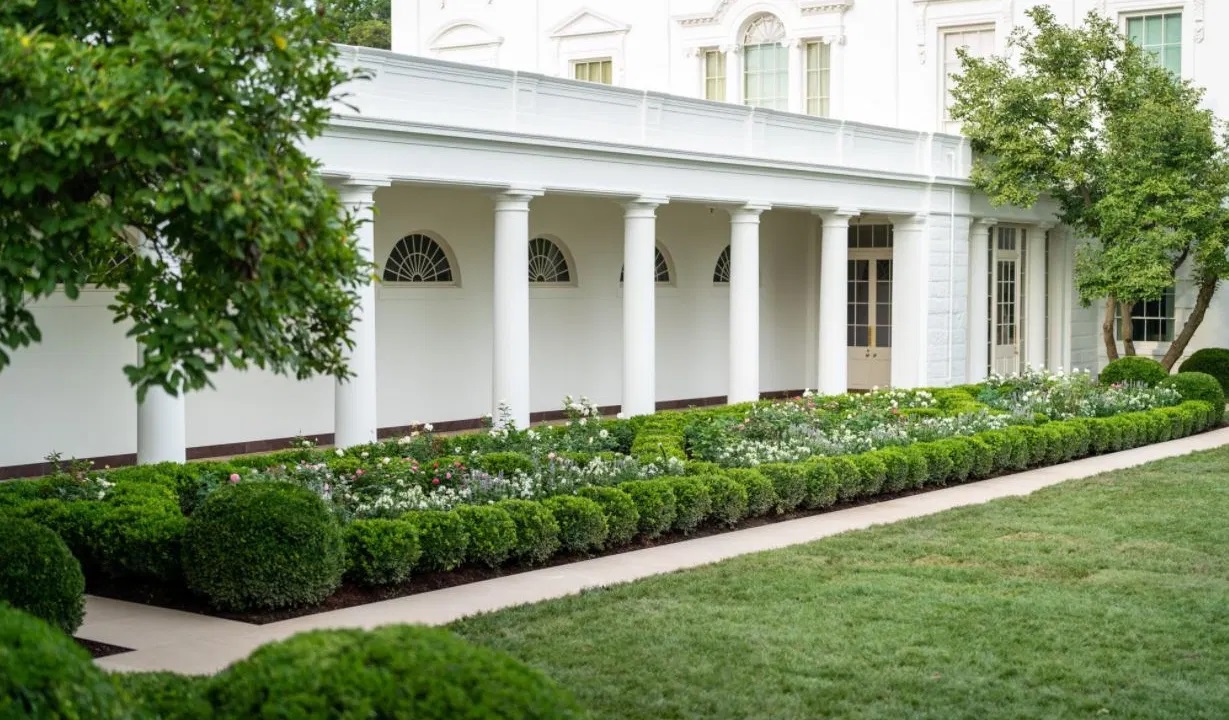Architects: Showcase your next project through Architizer and sign up for our inspirational newsletter.
Can you have a civilized society without a library?
The library as a collection of books and a building that houses said collection dates back to ancient Mesopotamia, coinciding more or less with the advent of the written word. Over the centuries, the architecture of libraries has undergone several evolutions, often depending on their use, the architectural trends of the era, and the technology available to build them.
Libraries are more than mere repositories of books — they are symbols of cultural wealth and knowledge. The construction, restoration and renovation of libraries are significant to architects as well as the public, with firms vying over these important commissions.
In this article, we trace the typology of the library through history, highlighting twelve of the most important libraries in the world, from Ancient Alexandria to Raleigh, North Carolina, where robots retrieve books from storage.
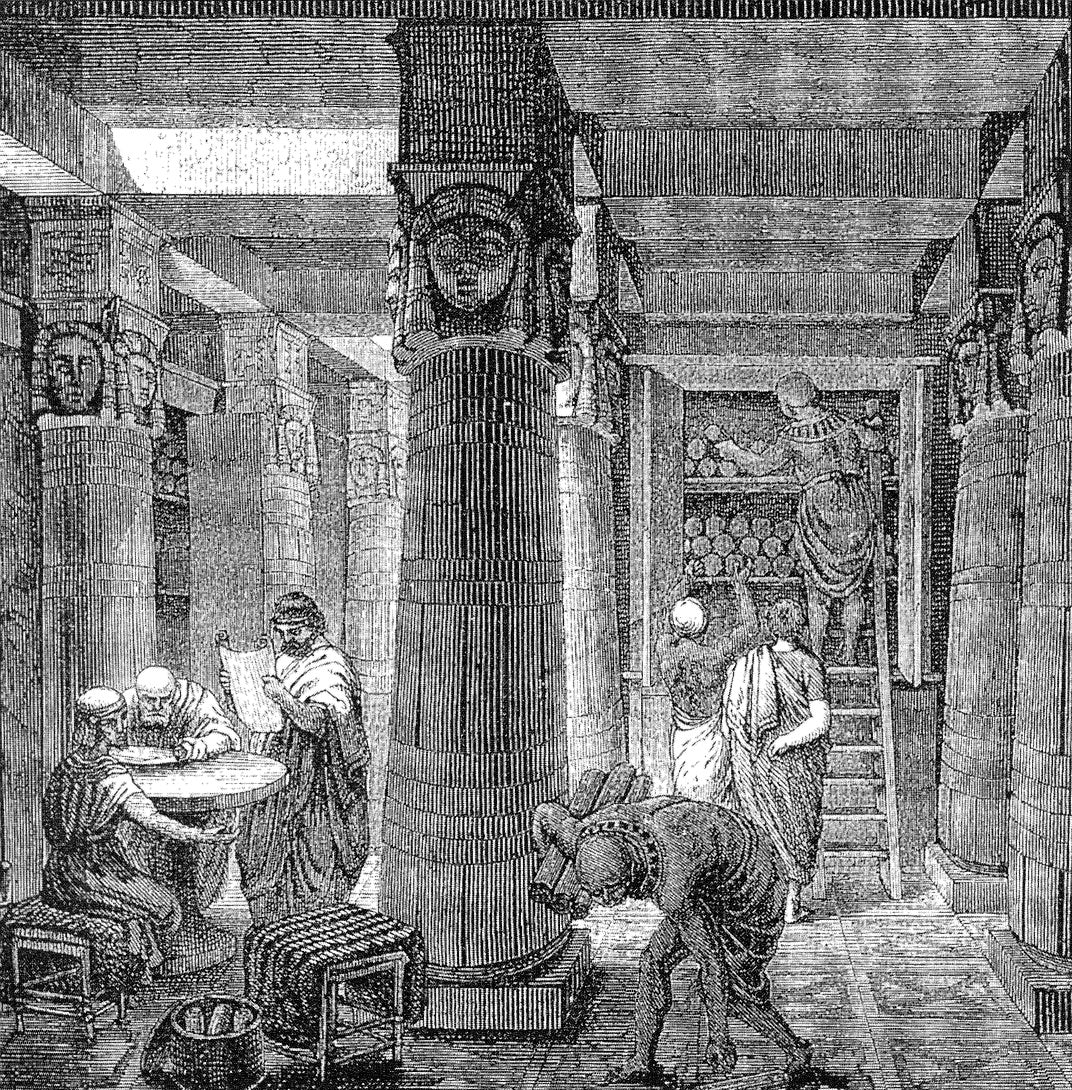
The Royal Library of Alexandria, 3rd century BC, Alexandria, Egypt
The most important library of the Ancient World was located in Alexandria, Egypt, and is the model for what we think of as a library today. Scholars traveled from far and wide to study in Alexandria, whose library was built much like a college campus, with rooms to store texts and rooms to study. The Royal Library of Alexandria was destroyed in a fire—or perhaps several attacks, including one by Julius Caesar.
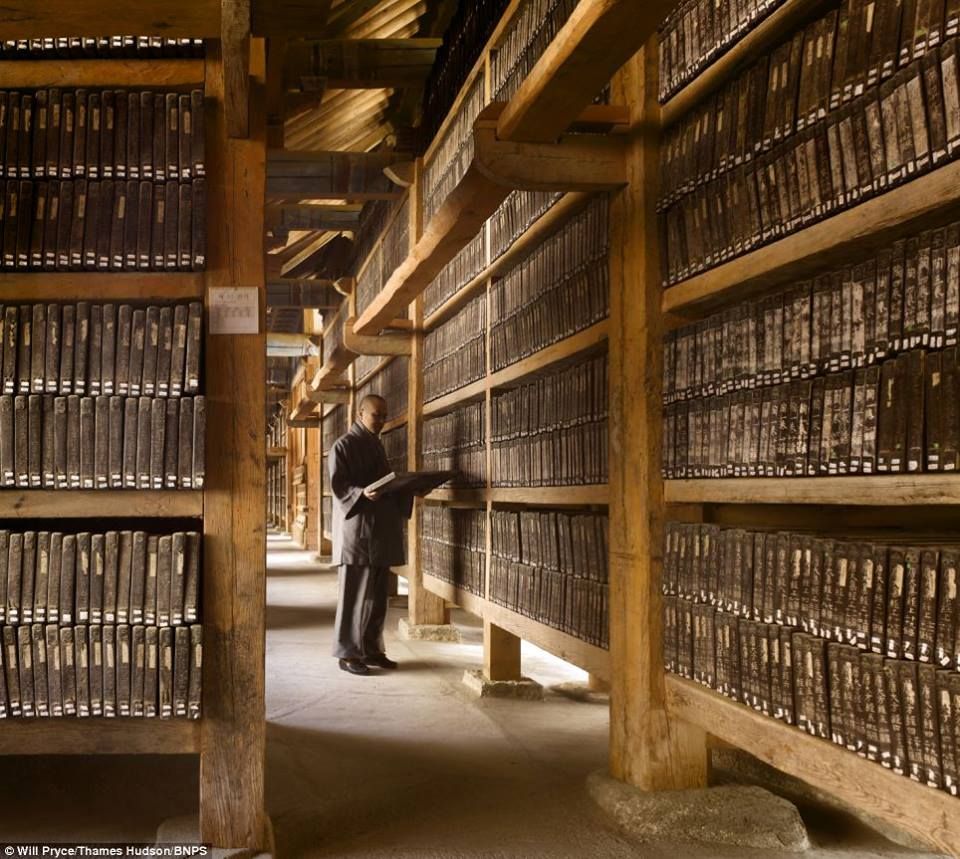
Photo via The Telegraph
Haeinsa Monastery, 802, Mount Gaya, Korea
The Haeinsa Monastery isn’t what we think of as a library, but since the Middle Ages it has housed the Tripitaka Koreana, “the most complete and accurate corpus of Buddhist doctrinal texts in the world,” according to UNESCO. The Haesina is a repository for the woodblocks used to print pages before the invention of the printing press. The woodblocks are stored on shelves much like bookshelves and the building is one of the largest wooden storage facilities in the world.

Photo Credit: felibrilu
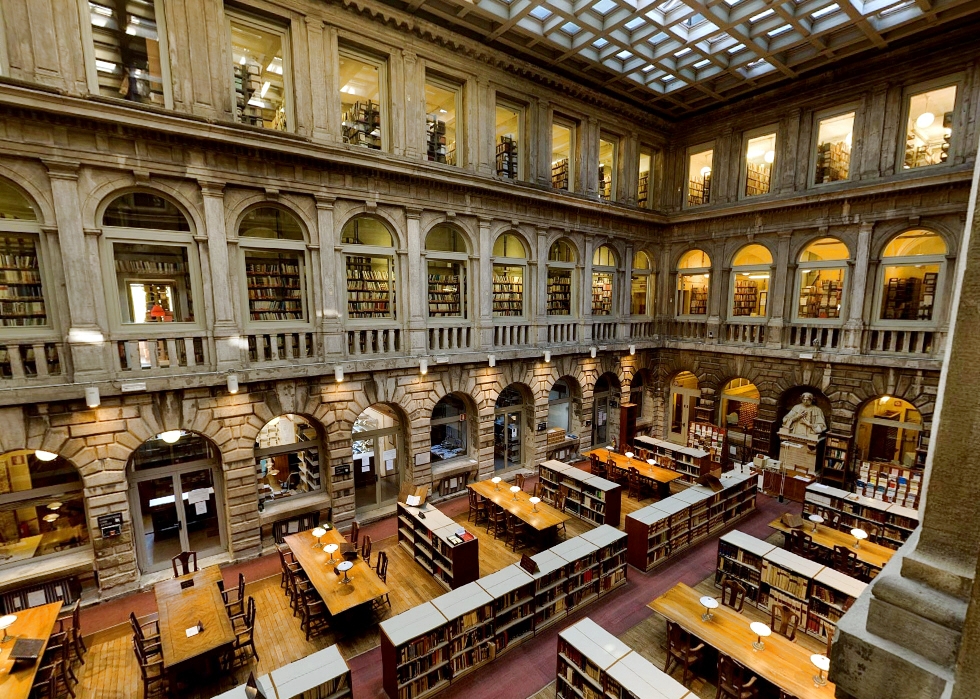
Photo via Zero
Biblioteca Marciana, 1564, Venice
Named for St. Mark, the patron saint of Venice, and located on St. Mark’s Piazza, the Biblioteca Marciana was designed by Renaissance architect Jacopo Sansovino. It is one of the oldest surviving libraries in Italy and contains one of the greatest collections of classical texts in the world. Originally, the books were secured by long iron chains to the lecterns, which stood in rows like school desks. During the Middle Ages and the Renaissance, books were often kept in this way so theives could forget about trying to steal them.

Photo Credit: Jeurgen Jauth
Trinity College Library,1732, Dublin
The Trinity College Library was Thomas Burgh’s masterpiece and remains the largest library in Ireland. Originally, the ceiling was flat and there were no books in the galleries. The architects Deane and Woodward completed a major reconstruction of the library in 1856 in order to accomodate the books that accumulated after the library was given legal deposit rights, meaning it would receive a copy of every book published in the Republic of Ireland.

Photo Credit: Shubhika Bharathwaj
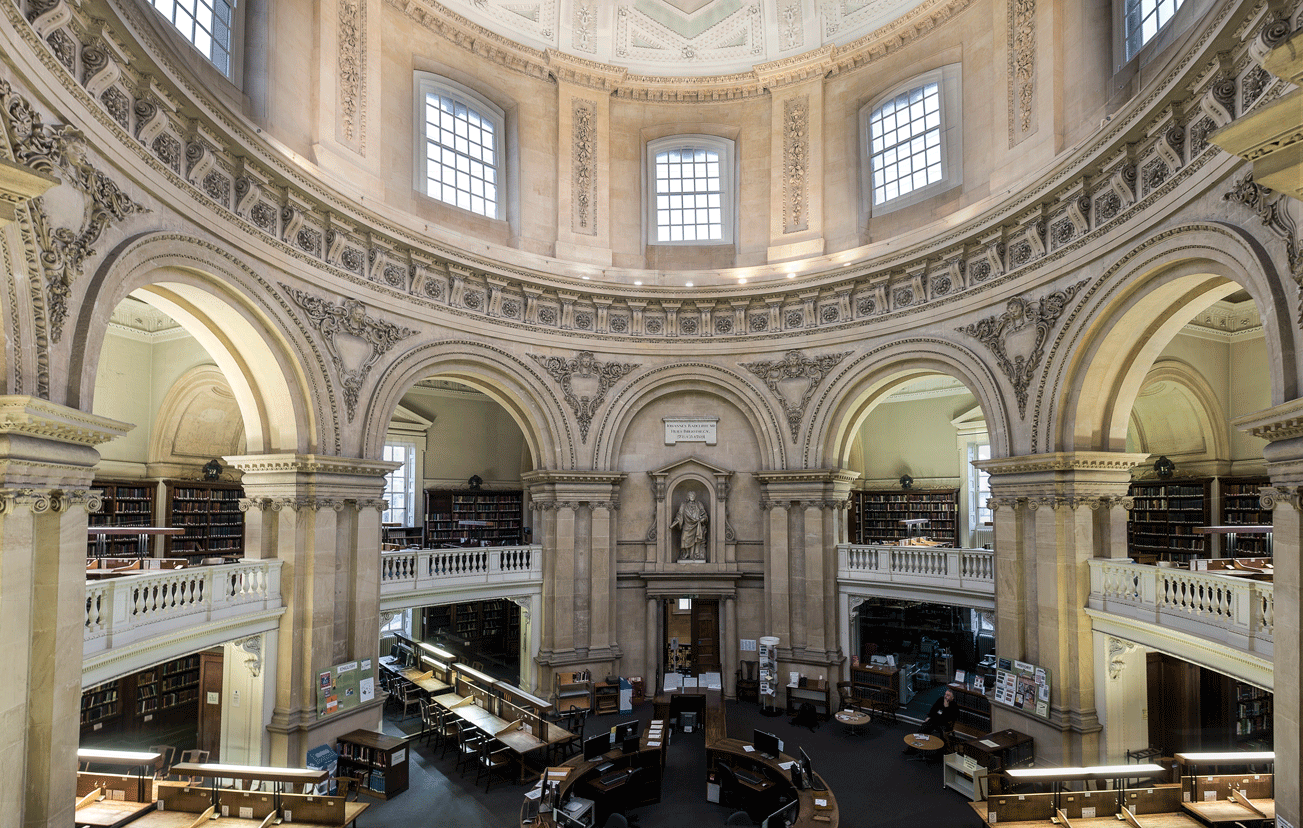
Image via The English Home
Radcliffe Camera, 1749, Oxford, England
The Radcliffe Camera was the first circular library constructed in England. It was funded by the physician John Radcliffe and designed by Sir Christopher Wren’s pupil Nicholas Hawskmoor and James Gibbs, who took over as architect when Hawksmoor died before the construction began. It’s an excellent example of English Palladian architecture. The library is centered around a dome and is full of Classical details, including Corinthian columns.

Photo Credit: Keith Ewing
Admont Library, 1776, Admont, Austria
The library inside the Admont Monastery in the Alps looks like something out of a fairy tale. It is one of the longest monastic libraries in the world, second only to the Mafra Library in Portugal. It is thoroughly Rococo in design, and the books were originally bound in white leather to match the walls. The library was never used for study, but as a place to proudly display the Monastery’s collection. The monks would bring the books to their cells in order to read them.

Photo Credit: Paula Soler-Moya
Bibliothèque Sainte-Geneviève, 1850, Paris
In the heart of the Latin Quarter, just steps away from the Pantheon, the Bibliothèque Sainte-Geneviève is Paris’s grandest library. It was designed by Henri Labrouste to resemble the Beaux-Arts train stations being built around the same time. Architects had only recently begun using cast iron, and realized it could create delicate patterns as well as bear heavy loads. This proved incredibly useful not just for libraries, but for architecture in general.

© Davis Brody Bond, a Page Company, EverGreene Architectural Arts
New York Public Library, 1911, New York City
One of the most famous libraries in the United States, the New York Public Library’s main branch at 42nd Street and Fifth Avenue remains a testament to the city’s literary history and a Beaux-Arts architectural masterpiece. Designed by Carrère and Hastings, it was the largest marble building constructed in the US at the time of its completion. EverGreene Architectural Arts is responsible for restorations in the Rose Main Reading Room.
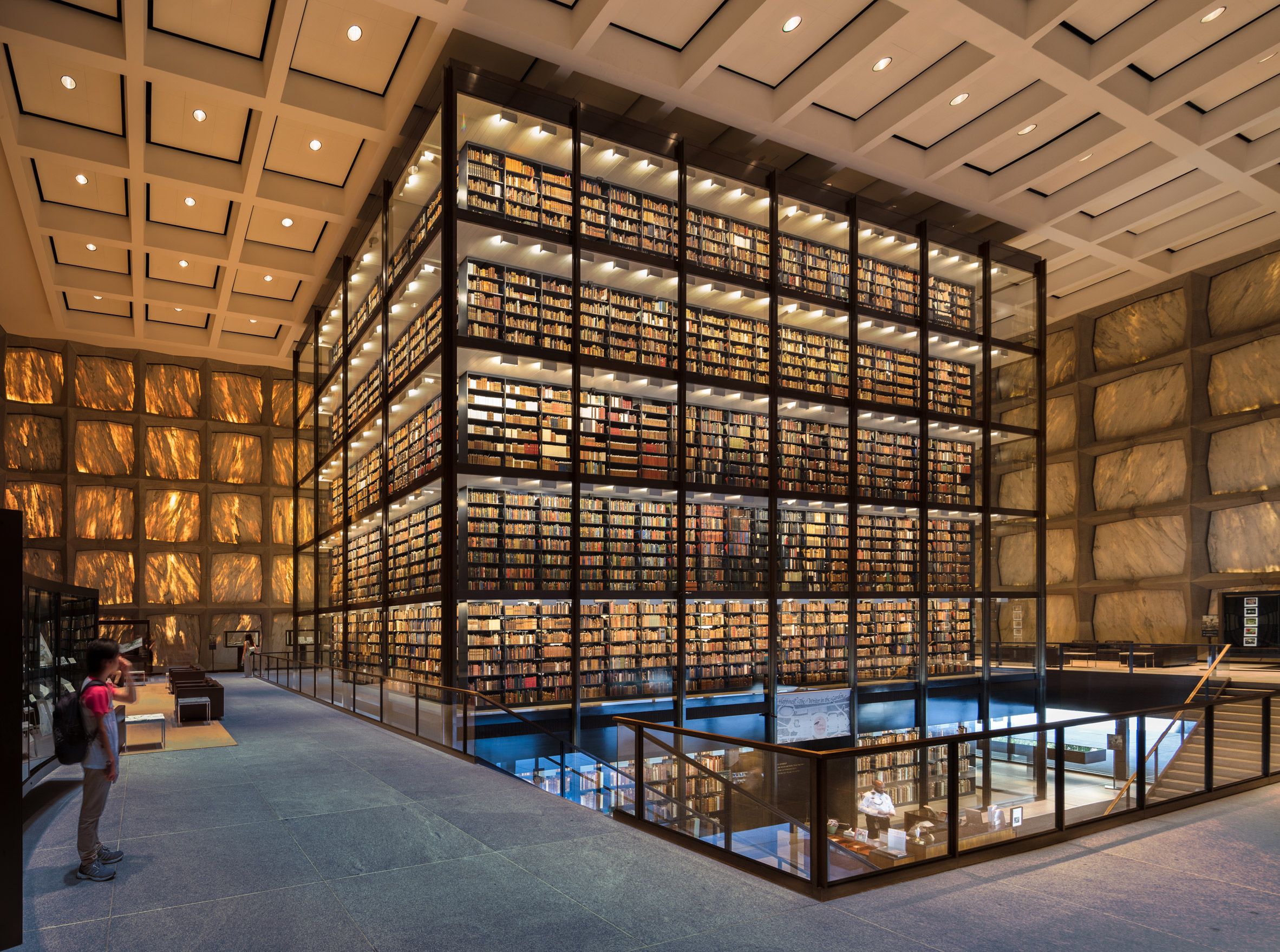
Image via Dezeen
Beinecke Library, Yale University, 1963, New Haven, Connecticut
Gordon Bunshaft of Skidmore, Owings & Merrill designed the monolithic Beinecke Rare Book & Manuscript Library at Yale in 1963. The Vermont marble façade appears to glow on the inside when the sun is strong, but protects the books from harmful rays. SOM created this modernist masterpiece using Vermont marble and granite, bronze and glass. Six stories of illuminated stacks in the center of the library store the books.
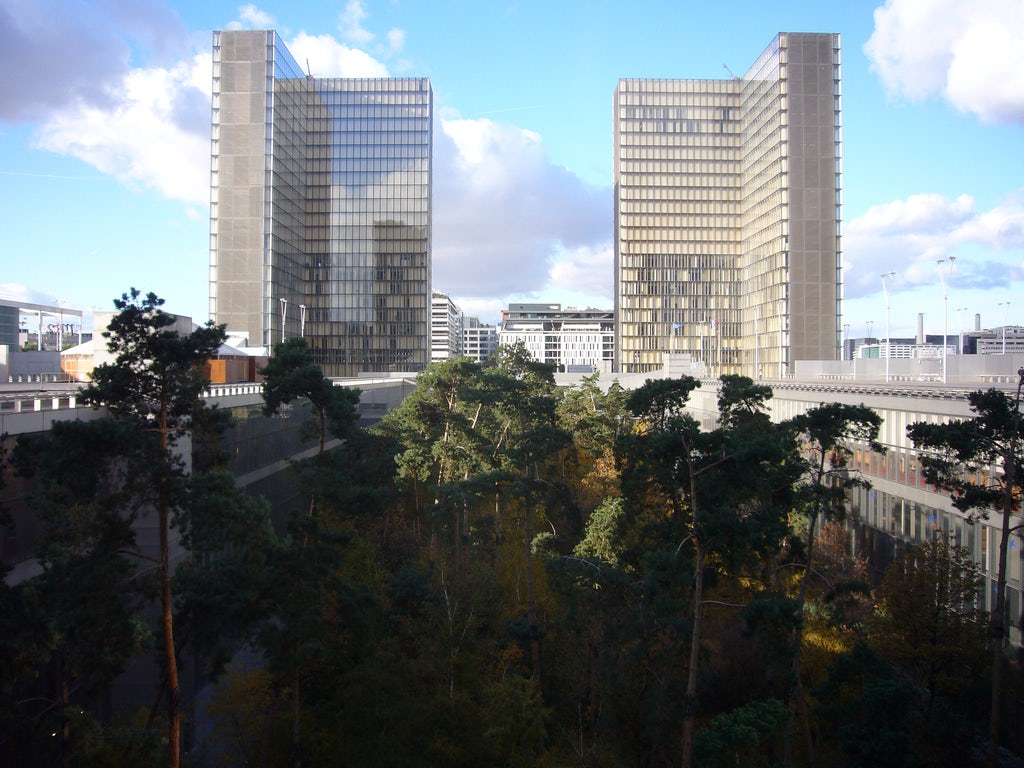
Photo Credit: Natalie Hegert
Bibliothèque Nationale de France François Mitterrand, 1994, Paris
In 1989, then-President of France François Mitterrand announced an international design competition for a new library that would be a part of the Bibliothèque Nationale de France. The bid was awarded to Dominique Perrault for his monumental design incorporating four glass towers shaped like open books on the four corners of a huge esplanade. Perrault’s design was modern and minimalist, which garnered him much criticism from the French, though many have grown to admire the library’s design. The reading rooms are sunken below and arranged around a garden courtyard containing full-size trees.
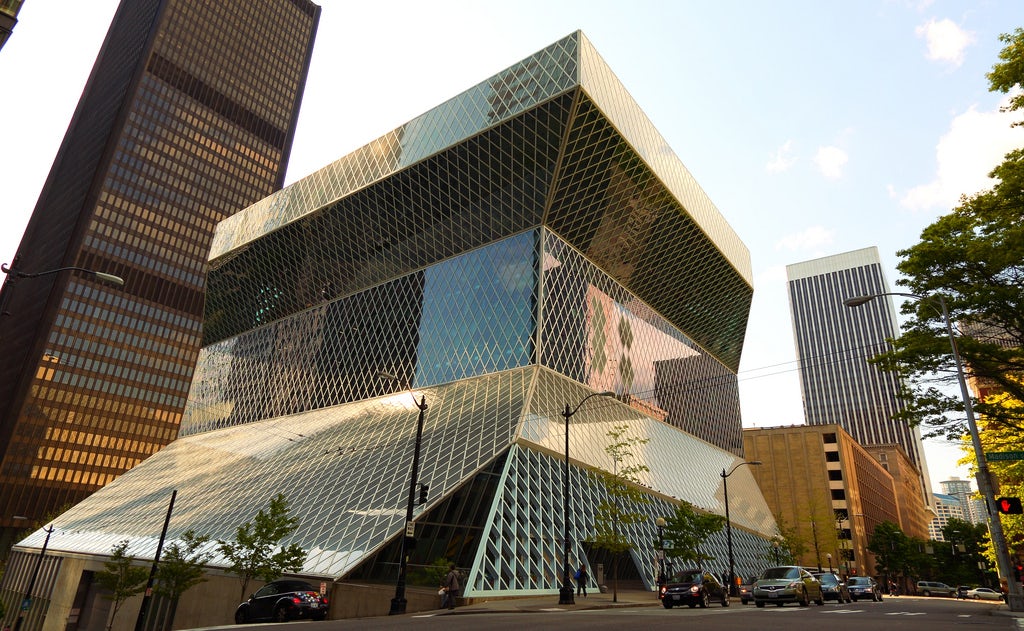
Photo Credit: Andrew Smith

Image via Divisare
Seattle Central Library, 2004, Seattle
Dutch architect Rem Koolhaas of OMA and American architect Joshua Prince-Ramus of REX collaborated with Seattle-based LMN Architects to create the Seattle Central Library, completed in 2004. They designed a gorgeous, modern library with lots of open space, a 275-seat auditorium, meeting rooms and a stack system known as the books spiral. Four floors of stacks are connected by gentle ramps, and 75 percent of the collection is located there. The light-filled reading room is nearly 12,000 square feet and the library houses 400 computer terminals. The building’s diagonal grid system of concrete, steel, and glass was designed to withstand lateral forces of wind or earthquakes.

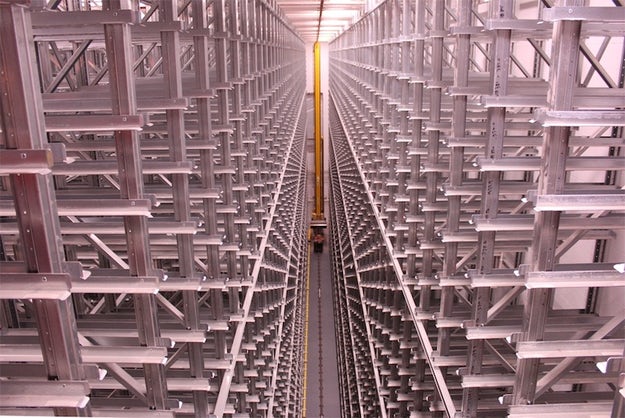
Image via Architizer
James B. Hunt Jr. Library, 2013, NC State University, Raleigh, North Carolina
NC State University’s brand-new library, designed by executive architect Pearce Brinkley Cease + Lee and Snøhetta, goes a step beyond the rest — it’s run by robots. BookBots, to be precise, are programmed to retrieve any of the library’s 1.5 million books in under five minutes. Library patrons can watch through a glass wall as the bookBots zoom through the Robot Alley storage area, directed by a supercomputer hidden in the bowels of the building. This system uses one-ninth of the space needed for open stacks, freeing up valuable square footage for study rooms, learning commons, auditoriums and a Makerspace, which has 3D printers, a 3D scanner and a laser cutter.
Architects: Showcase your next project through Architizer and sign up for our inspirational newsletter.


